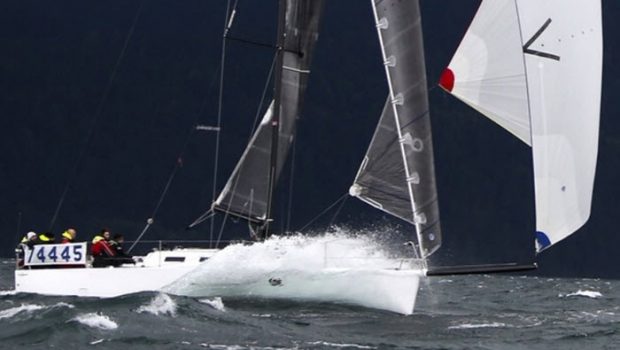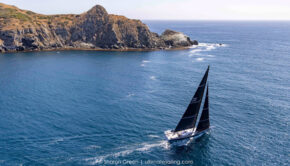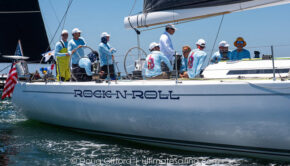Innovative 50th entry for 50th Transpac
Published on September 5th, 2018
Los Angeles, CA (September 5, 2018) – In the build up to what could be one of the most popular Transpac races in its 112-year history, Canadian Peter Salusbury became the 50th entry to next year’s 50th running of this 2225-mile classic biennial ocean race from Los Angeles to Honolulu.
“This has been a long term dream of mine to do this race, and I’m thrilled to have this opportunity,” said Salusbury from Vancouver, who has entered his Paul Bieker-designed Longboard, a Riptide 35 Mk II built by Jim Betts in 2012. “This race is what this boat was designed to do, so we are really looking forward to it!”
Salusbury joins what is presently the most entries the Transpac Race has had this far in advance to the first start, which in 2019 is planned for July 10.
Longboard represents an innovative and collaborative effort between Bieker and Salusbury to fulfill the vision of an offshore-capable race boat that can be sailed with fewer crew and still achieve high performance.
Besides having a carbon mast, lots of sail area and high-tech design and construction for a light weight of just under 3 tons, Longboard also features 1200 lbs of water ballast positioned in outboard tanks. This helps offset the weight of 4 additional crew who would normally be racing on a boat of this size and type, allowing Longboard to race with only 4 or 5 on the team.
 And unlike human crew that needs to aboard throughout the race and needs to be watered and fed (and housed ashore and given a plane ticket home), water ballast can be added and subtracted as needed to achieve optimal trim depending on wind direction and strength.
And unlike human crew that needs to aboard throughout the race and needs to be watered and fed (and housed ashore and given a plane ticket home), water ballast can be added and subtracted as needed to achieve optimal trim depending on wind direction and strength.
“This boat powers up easily and we are at full tanks in only 10 knots of wind upwind,” says Salusbury. “When the apparent wind is aft of the beam and we have the spinnaker up we can dump that ballast and go fast.” Another feature on Longboard that is unique to some other Biecker designs are the unusual scallop-shaped tubercles on the rudder.
Paul Bieker explains the function of these unusual features:
“Rudder tubercles decrease the tendency for stalling in certain cases. Drag is increased somewhat, but stall angle is increased and in the case of rudder arrangements that are likely to ventilate easily, the tubercles act as fences, reducing ventilation and subsequent flow detachment. Thanks for inspiration goes to Megaptera novaeangliae.”
Say what: “Megaptera novaeangliae”? Humpback whales.
“These tubercles are so effective,” said Salusbury, “that I’ve often wondered if we could have a smaller rudder to reduce drag even more because we’ve never had any loss of control on this boat.”
And while this will be the first Transpac for the Longboard team, they are no strangers to racing to Hawaii.
“We have raced twice to Hawaii in the Victoria-Maui race, first in 2014 with 6 crew and in 2016 with only four,” said Salusbury. “The 2016 race was tough, it was windy and we did it in only 10 days, but it was exhausting since I was navigating and also standing a watch. So we’re thinking of adding a fifth to our crew for Transpac.”
So far Salusbury has two confirmed for crew – his son Jim and his long-time offshore sailing partner Jeremy Hill – and in the coming months they will decide on their fourth and possibly fifth member to their team.
As for preparation for the race, the Longboard team will not be training or racing in Southern California, but instead plan on a regimen of medium-distance offshore races in the Pacific Northwest, such as the Southern Straits Race and Swiftsure Race in the Spring, and the Round the County Race in mid-November.
For more on the Longboard Sailing Team and their exploits, visit www.facebook.com/longboardsailing
Event Details – Entry list – Facebook
Source: Dobbs Davis









 We’ll keep your information safe.
We’ll keep your information safe.